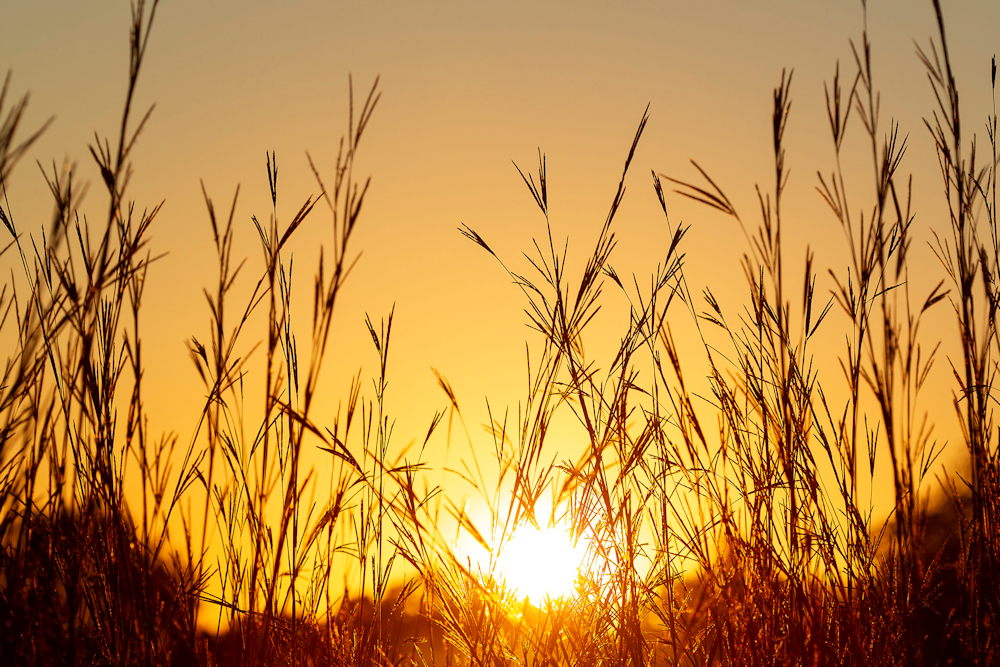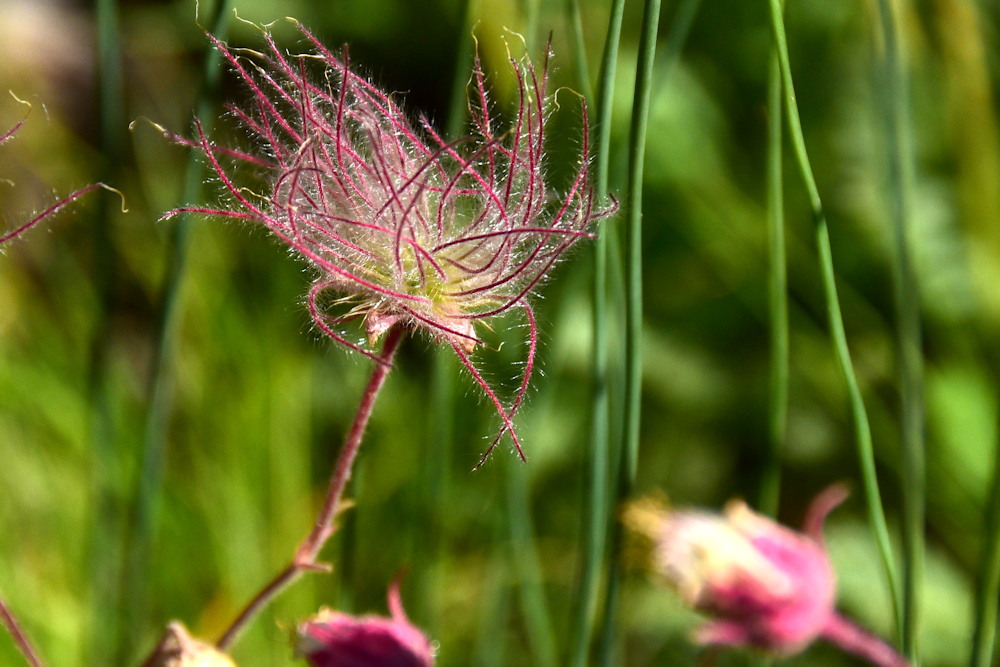Step into a realm of natural beauty and tranquility with prairie-style gardens. This article unveils the captivating characteristics, benefits, design principles and essential plant choices for creating your own captivating prairie oasis.
Prairie gardens exude a sense of wild allure and offer a unique way to bring nature’s splendor into your own backyard. Inspired by the vast, undulating landscapes of North American prairies, these gardens showcase a harmonious blend of native plants, breathtaking vistas and an eco-friendly ethos. Let’s delve into the main characteristics of a prairie-style garden, its advantages, design considerations and some must-have plant choices to transform your outdoor space.

Advantages of a Prairie-Style Garden
Ecological Harmony: Prairie gardens promote biodiversity by providing habitats for various native species, including birds, butterflies and pollinators, thereby contributing to the local ecosystem.
Low Maintenance: Once established, prairie gardens are remarkably low maintenance, requiring minimal watering and limited fertilizers. Their self-sustaining nature makes them ideal for busy gardeners seeking an environmentally friendly option.
Water Conservation: Prairie plants are adapted to withstand drought conditions, reducing the need for excessive irrigation. This characteristic makes them particularly suitable for regions with limited water resources.

Designing and Creating a Prairie-Style Garden
Research Native Plants: Begin by identifying native plants that thrive in your region’s climate and soil conditions. Consult local gardening resources or nurseries specializing in native species.
Embrace Plant Diversity: Prairie gardens thrive on diversity. Aim for a variety of grasses, wildflowers and perennials that bloom at different times, ensuring year-round interest and a continuous food source for wildlife.

Consider Soil Preparation: Most prairie plants prefer well-draining soil. Amend the soil with organic matter to improve its texture and fertility. Minimize the use of chemical fertilizers, as prairie plants are adapted to nutrient-poor conditions.
Plan for Sunlight: Prairie plants generally require full sun to flourish. Assess your garden’s light exposure and choose plant locations accordingly.

Arrange Plant Heights: Arrange taller plants towards the back of your garden beds, gradually transitioning to shorter ones towards the front. This layering creates depth and mimics the natural patterns of prairie landscapes.
Incorporate Hardscaping Elements: Introduce hardscaping elements like meandering paths, rustic benches or natural stone accents to enhance the prairie ambiance and provide resting spots for contemplation.
In the context of creating a prairie-style garden, hardscaping refers to the incorporation of non-living elements or structures into the garden design. These elements are typically made of hard materials such as stone, wood, or metal and are intended to provide functional or decorative features within the garden. Examples of hardscaping elements that can enhance the prairie ambiance include pathways, seating areas, retaining walls, natural stone accents, pergolas, or even decorative sculptures. These elements can add visual interest, create focal points, and provide practical benefits such as defining spaces or guiding visitors through the garden.

Maintaining a Prairie-Style Garden
Once your prairie-style garden is established, proper maintenance ensures its long-term vitality and beauty. While prairie gardens are known for their low-maintenance nature, they still require attention to ensure the continued health of the plantings and the overall balance of the ecosystem. Here are some essential maintenance practices to consider:
Regular Weeding: Keep an eye out for invasive plants and weeds that may encroach upon your prairie garden. Regularly inspect the beds and promptly remove any unwanted vegetation to prevent them from competing with the native plants.

Seasonal Pruning: Some prairie plants may benefit from seasonal pruning or deadheading. Cut back dried or spent flower stalks and remove any damaged or diseased foliage. Pruning should be done at the appropriate times, ensuring you do not disrupt the growth cycle or remove important habitats for beneficial insects.
Watering and Irrigation: Once established, most prairie plants are drought-tolerant and require minimal watering. However, during prolonged dry spells, young or newly planted specimens may need occasional watering to help them establish deep root systems. Focus on watering deeply and infrequently to encourage plants to develop resilient roots.

Fertilization: Prairie gardens generally do not require regular fertilization, as they are adapted to nutrient-poor soils. However, if specific plants show signs of nutrient deficiencies, you may apply organic fertilizers sparingly and based on the specific plant’s needs. It’s always advisable to conduct a soil test to determine if any specific nutrient amendments are necessary.
Mulching: Applying a layer of organic mulch around the base of plants helps conserve moisture, suppress weeds, and regulate soil temperature. However, be mindful not to apply mulch too thickly, as it can smother the prairie plants or promote excessive moisture retention.
Wildlife Management: Encouraging wildlife in your prairie-style garden is part of its charm. However, it’s important to strike a balance. Monitor the garden for any pest infestations and take appropriate measures to manage them while minimizing the impact on beneficial insects and other wildlife.
By incorporating these maintenance practices into your gardening routine, you can enjoy the continued vibrancy and ecological benefits of your prairie-style garden. Remember, the aim is to strike a harmonious balance between nurturing the plants and supporting the natural processes that make prairie gardens so captivating.
Notable Prairie Garden Plants
Big Bluestem (Andropogon gerardii): A majestic grass with blue-green foliage that turns a stunning shade of reddish-bronze in the fall, adding captivating seasonal interest.

Black-Eyed Susan (Rudbeckia hirta): These vibrant yellow flowers with dark centers attract pollinators and add a splash of color to the garden.

Purple Coneflower (Echinacea purpurea): Known for its distinctive pink-purple daisy-like flowers, this plant is not only visually striking but also beloved by bees and butterflies.

Butterfly Milkweed (Asclepias tuberosa): Butterfly milkweed is a native plant commonly found in North America. It serves as a crucial host plant for Monarch butterfly larvae in various regions across North America, particularly in the United States and southern Canada. Monarch butterflies rely on butterfly milkweed as a food source for their caterpillars and as a nectar source for adult butterflies during their migration.

Switchgrass (Panicum virgatum): With its tall stature and attractive seed heads, this grass provides structural interest, turning shades of gold in the autumn.

Prairie Smoke (Geum triflorum): A captivating perennial with feathery, smoke-like seed heads and rich burgundy-red flowers, bringing a touch of ethereal beauty to the garden.

Little Bluestem (Schizachyrium scoparium): This warm-season grass exhibits stunning blue-green foliage that transforms into shades of copper and orange in the fall, adding a captivating touch to the garden.
Wild Bergamot (Monarda fistulosa): Known for its aromatic leaves and lavender-colored flowers, this perennial plant attracts pollinators and adds a delightful fragrance to the garden.

Blanket Flower (Gaillardia spp.): With its vibrant and daisy-like flowers in shades of red, yellow and orange, the blanket flower adds a splash of color and visual interest to the garden. It thrives in full sun and is known for attracting pollinators while being relatively low-maintenance.

By embracing the principles and plant choices of prairie-style gardens, you can transform your outdoor space into a sanctuary that celebrates the allure of the natural world. Experience the serenity and enchantment of prairies right at your doorstep while fostering an eco-friendly haven for wildlife and cherished native species.









